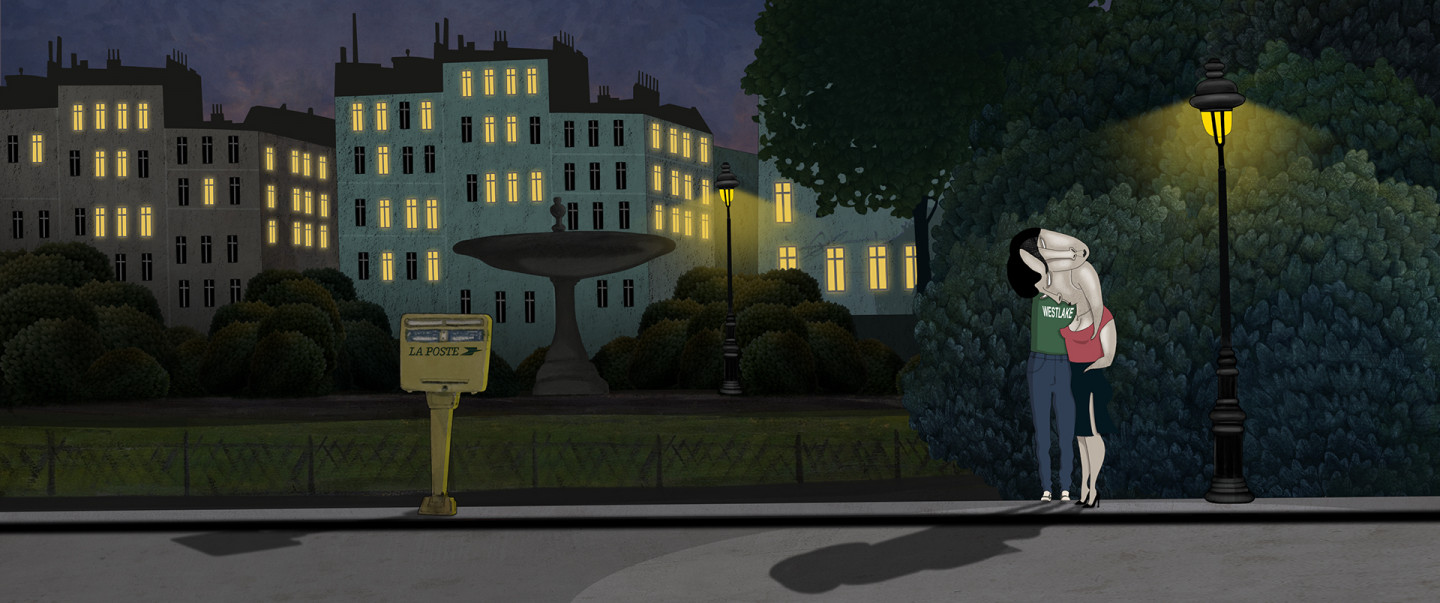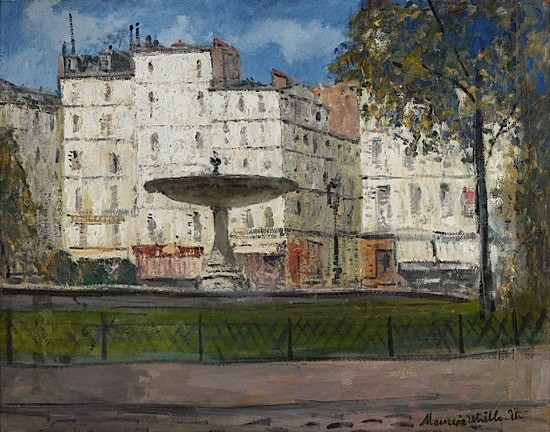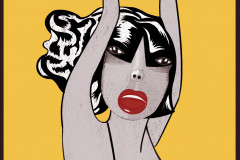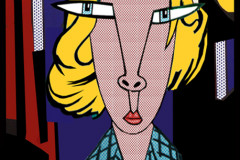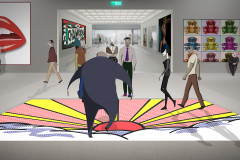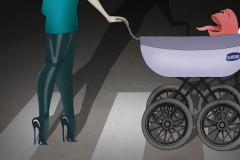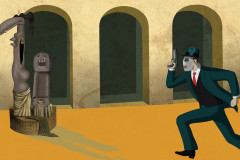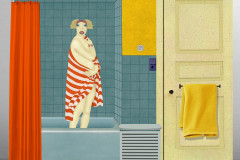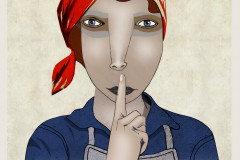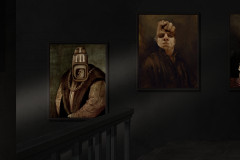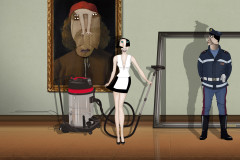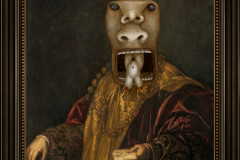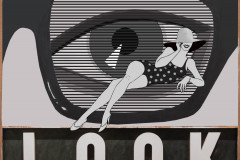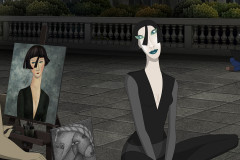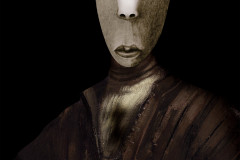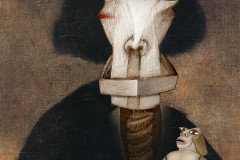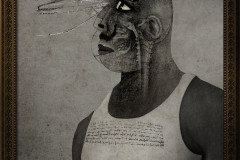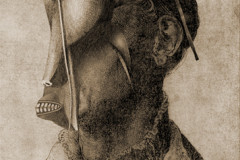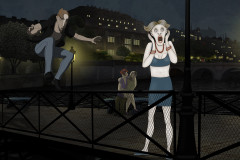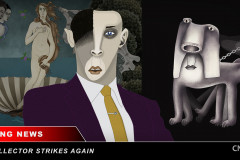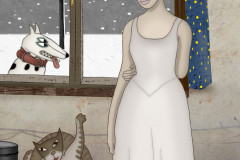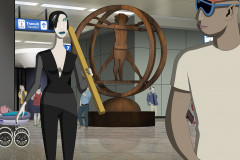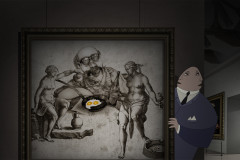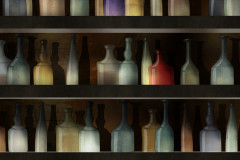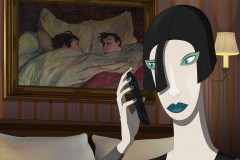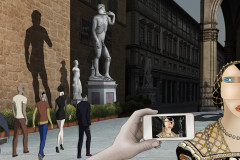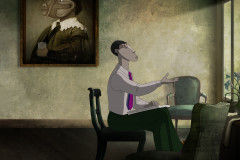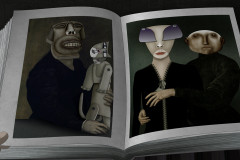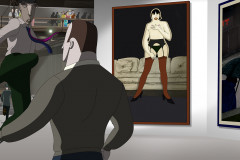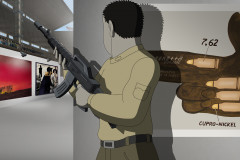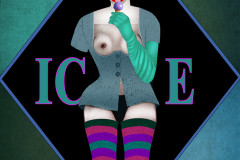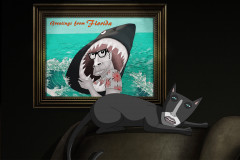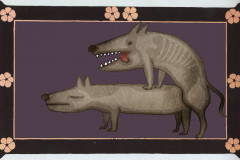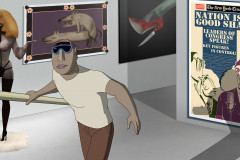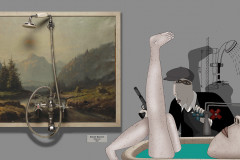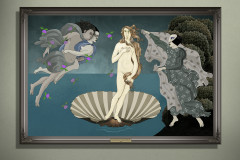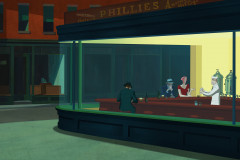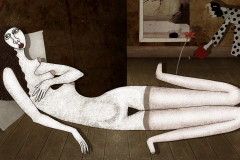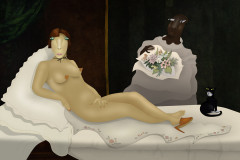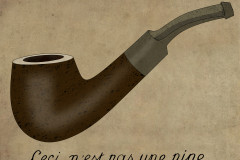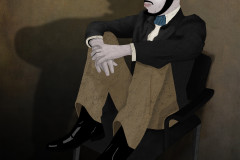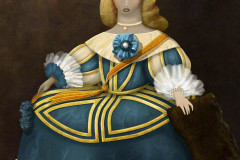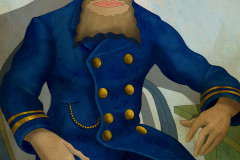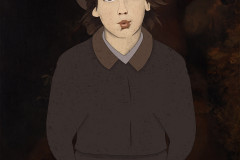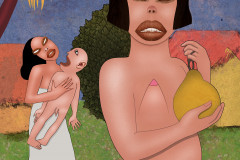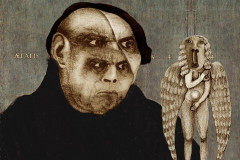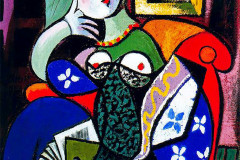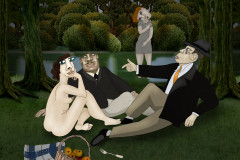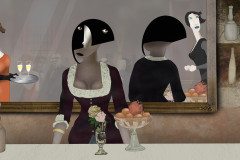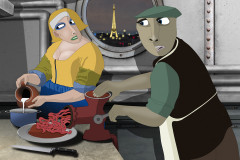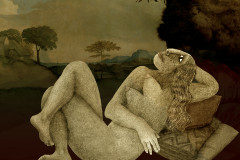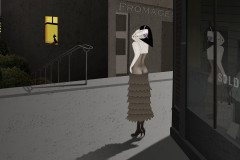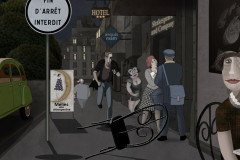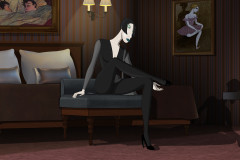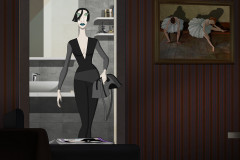Utrillo, Maurice (1883-1955): Place Pigalle, 1910 (olaj, fatábla, 68 x 87,5 cm, magántulajdon). A francia festő az impresszionisták késői követőjének számít, aki Párizs művésznegyedének, a Montmartre-nak volt lakója és megörökítője. Képein szinte soha nincs ember, csak meghitt, bensőséges hangulatú utcarészletek. Amolyan „csókolózásra valók”. A Ruben Brandt első üldözéses jelenetében tűnik fel ez a városrészlet, valóban egy csókolózó párral kiegészítve.
Utrillo anyja a kalandos életű, modellből kiváló festővé vált Suzanne Valadon volt, aki nem volt benne biztos, hogy ki gyermekének az apja – a részeges csavargótól, Degas festőig, akinél az anya modellkedett, sok mindenki felmerül. Ez a kissé szabados életre valló tény is jól illusztrálja azt a bohém párizsi művészközeget, amelyben Utrillo felnőtt, s amelyben korán az alkohol rabjává lett. Anyja egyfajta terápiás céllal, az alkoholt helyettesítő eszközként adta kezébe 20 éves kora körül az ecsetet, s osztotta meg vele saját festékeit, amit követően hihetetlen gyorsasággal bontakozott ki a fiú tehetsége, s bár az alkohollal hosszú távon nem tudott szakítani, festő stílusát viszonylag korán megtalálva, elismert és sikeres művésszé vált. Az e festményén látható tér, a Place Pigalle az Utrillo kedvenc témájának számító Sacre Couer temlomtól nem messze, a Montmartre lábánál található, s ebben az időben rengeteg festőműteremnek és művészeti kávézónak adott helyet. A képen nem az éjszakai nyüzsgés látható, hanem az Utrillóra jellemző, fehéren vakító házfalak által meghatározott világos, nyugodt hangulat.
Utrillo, Maurice (1883–1955): Place Pigalle, 1910 (oil on panel, 68 x 87.5 cm, private collection). The French painter is considered a late follower of the Impressionists and was a resident and chronicler of Montmartre, Paris’s artistic district. His paintings almost never feature people, only intimate, atmospheric street scenes—perfect, one might say, for kissing. In Ruben Brandt, Collector, this urban landscape appears during the film’s first chase scene—this time, with an actual kissing couple added.
Utrillo’s mother was Suzanne Valadon, a colorful figure who began as a model and became an accomplished painter. She was unsure who fathered her child—possibilities ranged from a drunken drifter to Edgar Degas, for whom she had posed. This uncertainty reflects the bohemian world of Parisian artists in which Utrillo grew up—and where he quickly fell into alcoholism. Around the age of twenty, his mother gave him a paintbrush as a kind of therapy and alternative to drinking, sharing her own paints with him. From that point on, his talent developed with remarkable speed. Although he struggled with alcohol for the rest of his life, he found his artistic style early on and became a recognized and successful painter.
The square depicted in this painting, Place Pigalle, lies at the foot of Montmartre, not far from the Sacré-Cœur Basilica, one of Utrillo’s favorite subjects. At the time, the area was home to numerous studios and artist cafés. Yet the scene shown here is not one of nighttime bustle, but rather the calm, luminous atmosphere defined by bright whitewashed façades—typical of Utrillo’s serene and contemplative urban views.






